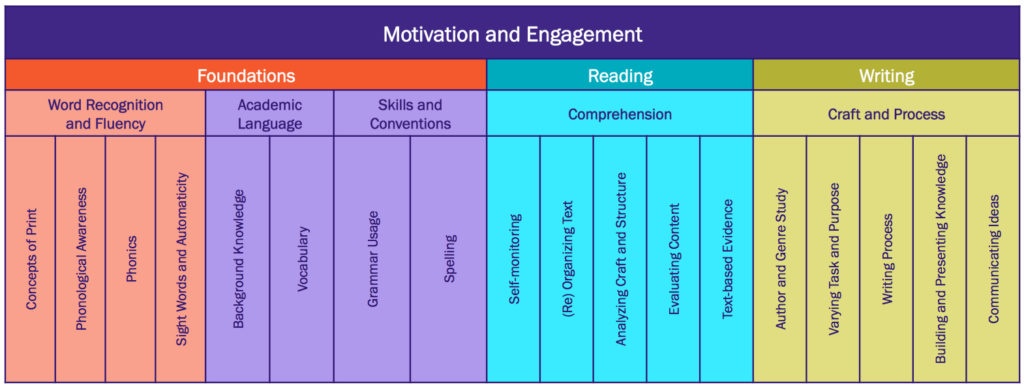Emily Hanford’s two recent essays, “Why Are We Still Teaching Reading the Wrong Way?” (New York Times, October 26, 2018) and “At a Loss for Words: How a Flawed Idea is Teaching Millions of Kids to be Poor Readers” (APM Reports, August 22, 2019), invite educators to examine the reasons why our education system habitually falls short in teaching children to read. Hanford addresses the fundamental truth that learning to read is not a natural phenomenon, as learning to speak is. While, as Hanford shows, systematic, explicit phonics instruction is essential, we might at the same time look at the broader context and ask ourselves, “What needs to change about the way we teach reading?”
The Complete Literacy Picture
Let’s face it: learning to read is hard! Knowing spelling-sound correspondences does not a reader make. First, a child has to want to learn to read. Then instruction in decoding, fluency, background knowledge, vocabulary, and comprehension strategies have to be orchestrated in a way that supports each student in learning to make meaning from text. The following framework for literacy instruction, developed by the late Dr. John Shefelbine at California State University, Sacramento, is a way to represent all that students need and that teachers face when planning reading and writing instruction for a class, small group, or individual student.

Thousands of readers have responded to Hanford’s pieces with comments in support of phonics instruction and with examples of students learning to read without formal phonics instruction. This commentary demonstrates that a simplistic approach will not meet the needs of all students. Here is a more nuanced approach to teaching reading: Learning to read follows a predictable sequence, whether a student learns intuitively or through formal phonics instruction. A child must learn that words are made up of sounds, that letters represent sounds, and that the relationship between letters and the sounds they represent is quite reliable. (The exceptions to English orthography do not negate that a student’s reliance on spelling-sound correspondences for decoding is most often successful in texts beginning readers encounter.) Some children learn these concepts through experience with text, freeing them to focus on comprehension; others, who develop the understanding more slowly or not at all, are at a disadvantage because they spend most of their energy struggling with the words themselves, with little available for comprehension.
What can be done for those students who need to develop the automaticity and fluency that will free them to devote more of their mental energy to the other crucial elements of reading? An exclusive regimen of phonics instruction will not solve this dilemma. These students need more than dry phonics instruction; they need shared reading experiences that develop a love of reading, comprehension instruction in grade-level text, vocabulary development, and a classroom community that allows them to read independently and talk about their reading. They also need foundational systematic phonics instruction as part of this constellation. To leave them struggling to decode is a disservice.
What Kind of Phonics Instruction?
Recognizing that children in any specific classroom will be at various phases of their reading development, with some reading more fluently and other struggling to access text, what kind of phonics instruction makes sense? Traditional phonics instruction in a whole-class setting is inefficient. While it benefits a portion of the class, it forces some students to sit through content they have already mastered and bores others because they are not developmentally ready for it. Differentiated phonics instruction in small groups of students who are at a similar point in their reading development is the most effective way to help all students make gains as readers. Systematic, explicit phonics instruction with assessments that identify students’ point of need best achieves this differentiation. To make this instruction purposeful, students need to see that decoding is immediately applicable. Immediate application to connected text and to spelling communicates to students that phonics is not just dry material to be mastered: it makes a whole world of reading and writing possible.
Those who would make phonics the core of reading instruction are shortchanging students, but point-of-need phonics, as part of the comprehensive approach articulated in Dr. Shefelbine’s framework (including vocabulary, background knowledge, and comprehension instruction), has its role to play in supporting student reading growth. Educators need broad knowledge of all the factors that support reading growth, the understanding of their students as readers that allows them to identify specific challenges, and the full complement of instructional tools and strategies.
